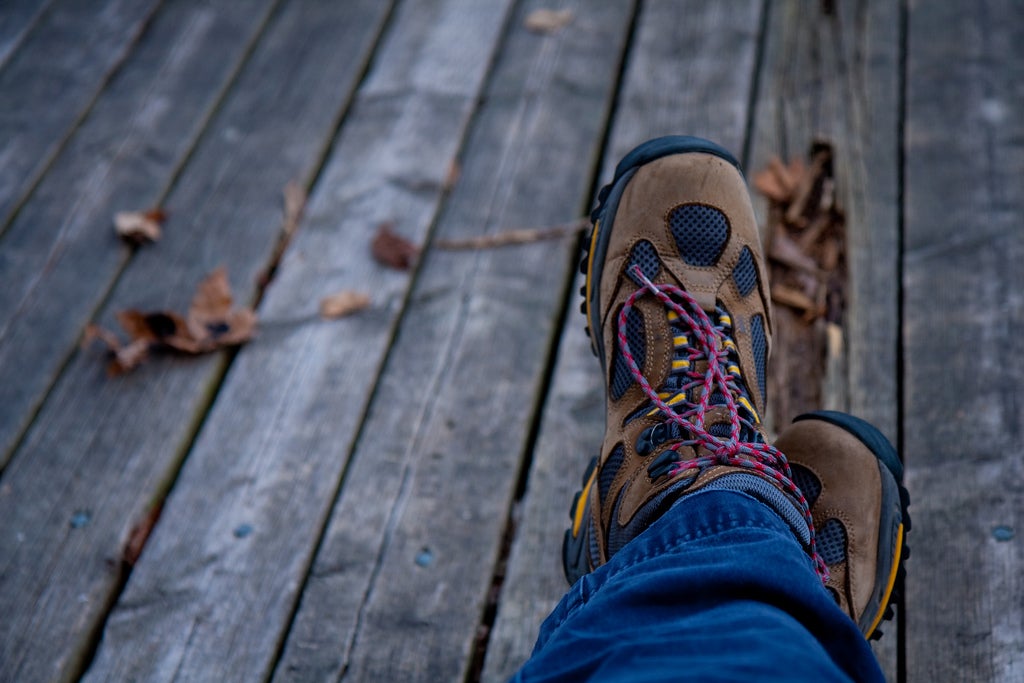How to Walk Better: Choose the Right Footwear

'Photo by veggiefrog'
Too-heavy boots and too-light insoles cause some of the most common foot problems.
Boots
The best backpacking shoes are as light as possible while still providing adequate arch and ankle support and protection against the elements. Heavy boots, besides weighing you down, can restrict the motion of the foot and actually alter your foot strike as the added swing weight (picture three-pound bar bells strapped to each ankle) could cause your feet to drag and/or land unnaturally. What you want: a shoe with a partially rigid midsole that flexes at the ball of the foot and is roomy in the toebox. That allows a natural gait, so your arch (not the boot’s) absorbs shock and the metatarsals and toes provide stability and evenly distribute body and pack weight.
When you shop, you’ll know a shoe is too rigid if, when you’re walking around the store, you literally hear a ker-thunk sound because the boot isn’t flexing at the ball. (Very stiff boots often have a rockered, or curved, sole to give the feel of a more “natural” stride, but that’s not the same as flex.) How do you know if it’s too light? Hold the heel of the shoe in your hand and push the toe down against the floor or table. “If the sole collapses anywhere but at the ball, it’s probably not supportive enough for backpacking,” says Brandan Hill, a designer at Chaco. In the store, exaggerate a strong toe-off to make sure the natural flex point of the ball of your foot matches the boot’s flex point. Try going up and down in half-size increments to get a feel for how the flex point shifts.
Insoles
Shoemakers use the words “insert,” “insole,” and “footbed” interchangeably to refer to the same thing: a contoured platform that’s supposed to provide additional cushion and stability, and keep your foot in a neutral position (level, with arch raised). The problem: Most shoes come with thin foam insoles that do squat. The solution: Get an after-market insert made specifically for hiking or running; most feature a molded, hard-plastic base for arch support, and resilient foam for all-day cushion. Most Backpacker editors swap out thin, noncontoured footbeds for a supportive insert.
Need new shoes? Browse our footwear reviews.